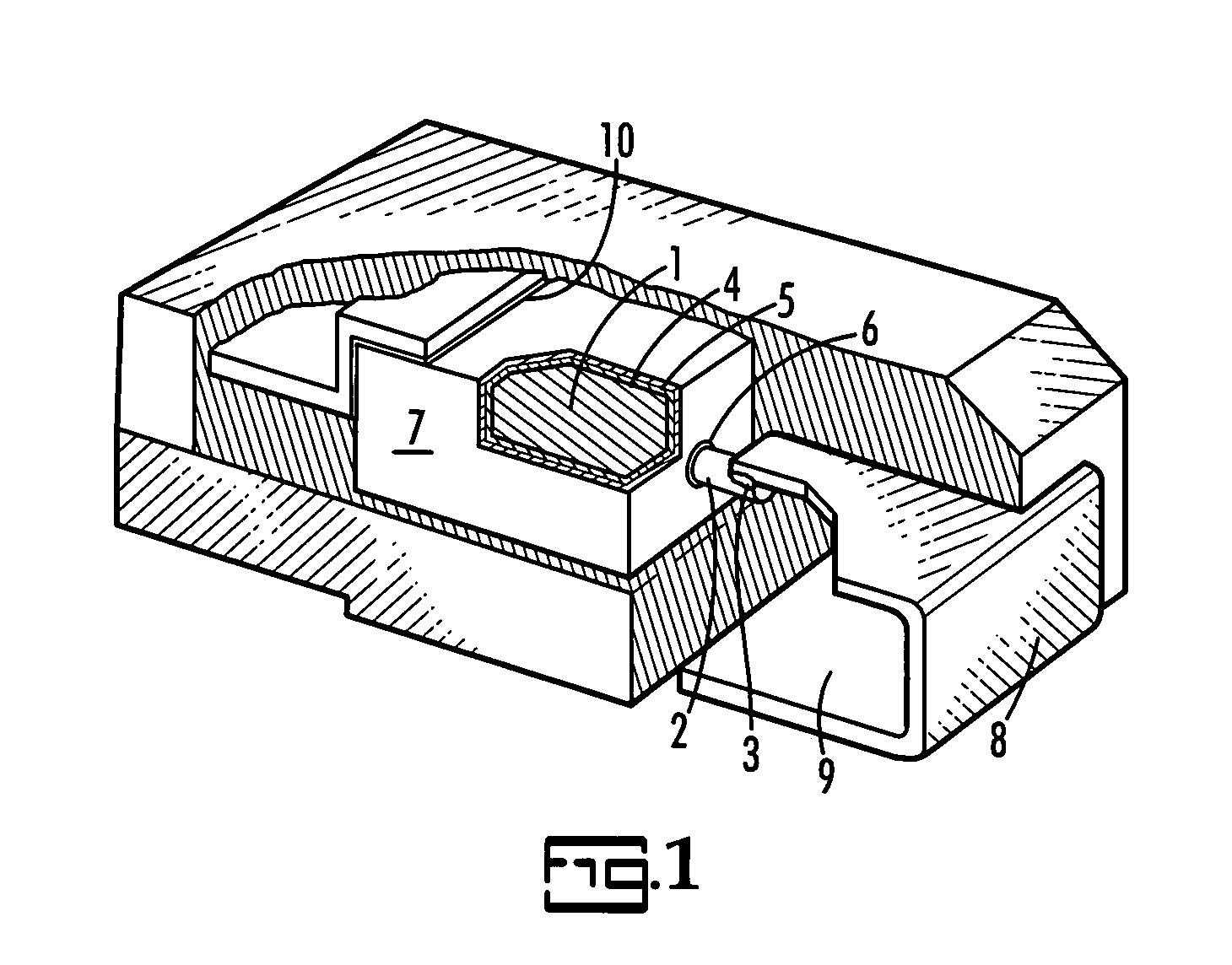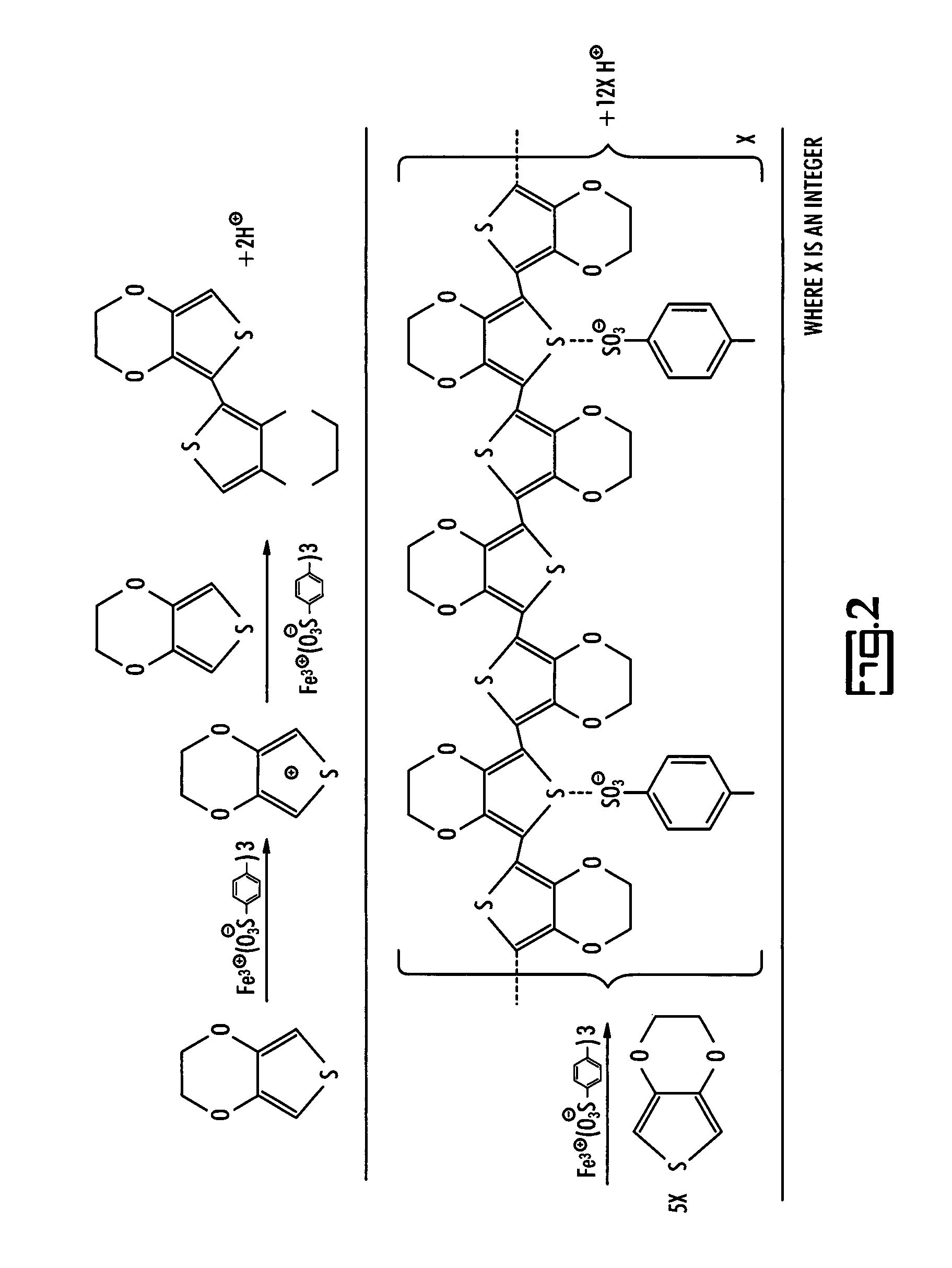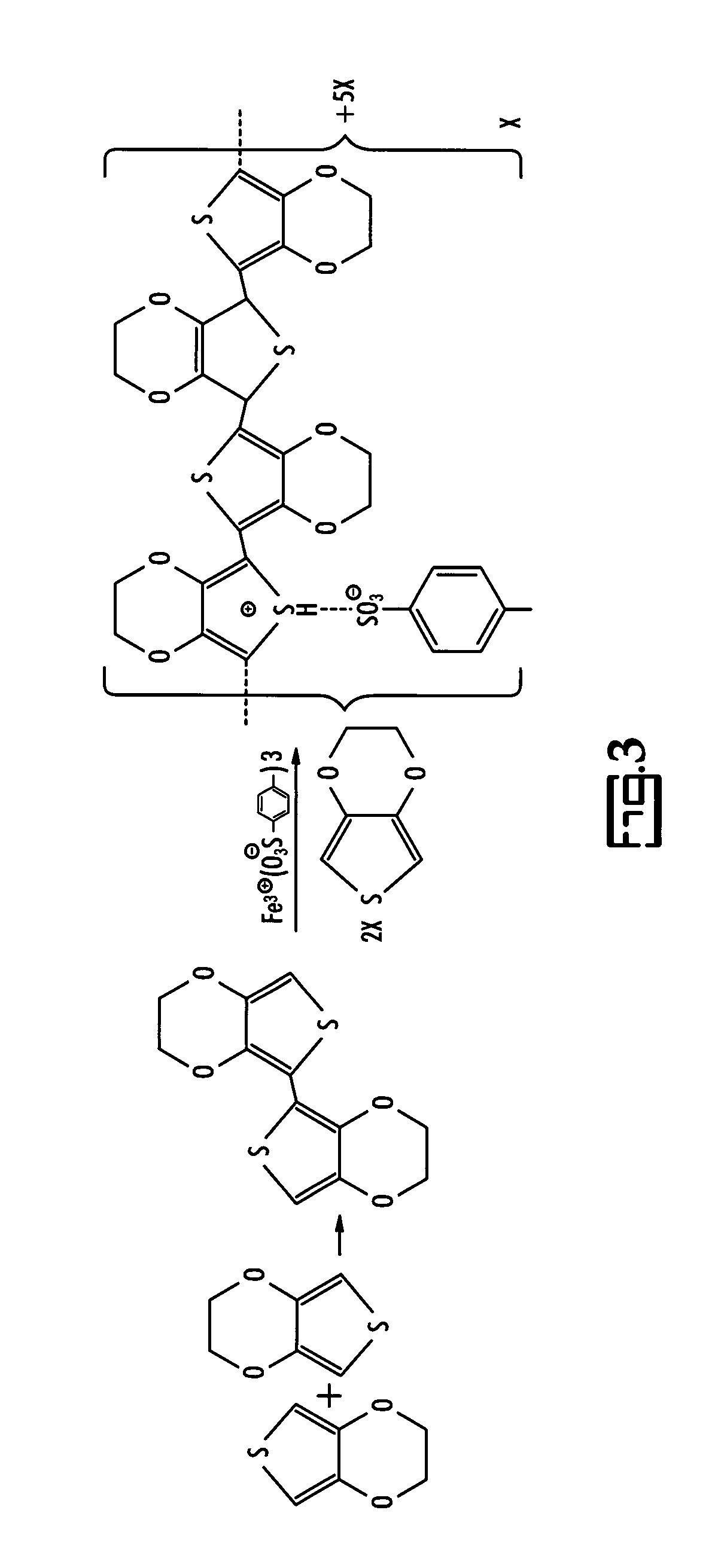Process for manufacturing low ESR conductive polymer based solid electrolytic capacitors
a technology of solid electrolytic capacitors and conductive polymers, which is applied in the manufacture of electrolytic capacitors, hybrid cases/housings/encapsulations, coatings, etc., can solve the problems of insufficient characterization of inefficient use of human resources, and inability to accurately characterize the mechanism of this degradation, etc., to improve the manufacturing efficiency, improve the esr and esr and cost, the effect of improving the quality
- Summary
- Abstract
- Description
- Claims
- Application Information
AI Technical Summary
Benefits of technology
Problems solved by technology
Method used
Image
Examples
example 1
[0036]A bar of 470 μF 4V rated tantalum anodes, with a size of 4.90 mm×3.25 mm×1.70 mm, was dipped into a solution of iron (III) p-toluenesulfonate (oxidant), dried, and subsequently dipped into a solution of 3,4-ethylenedioxythiophene (monomer) with 5 wt % of p-toluenesulfonic acid. The anodes were washed to remove excess monomer and by-products of the reactions after the completion of polymerization which formed a thin layer of conductive polymer (PEDOT) on the dielectric of the anodes. The anodes were then subjected to a DC voltage, or reformed, in a diluted phosphoric acid solution to reduce DC leakage. This dipping-reforming process cycle was repeated until a thick polymer layer was formed. Carbon and silver coatings were applied onto the anodes. ESR of the capacitors was measured in the same way as described in the comparative example. The test result is listed in Table 2.
example 2
[0037]A bar of 470 μF 4V rated tantalum anodes, with a size of 4.90 mm×3.25 mm×1.70 mm, was dipped into a solution of iron (III) p-toluenesulfonate (oxidant), dried, and subsequently dipped into a solution of 3,4-ethylenedioxythiophene (monomer) with 5 wt % of p-toluenesulfonic acid, which was treated with Ca(OH)2 overnight and filtered. The anodes were washed to remove excess monomer and by-products of the reactions after the completion of polymerization, which formed a thin layer of conductive polymer (PEDOT) on the dielectric surface of the anodes. The anodes were then subjected to a DC voltage, or reformed, in a diluted phosphoric acid solution to reduce DC leakage. This dipping-reforming process cycle was repeated until a thick polymer layer was formed. Carbon and silver coatings were applied onto the anodes. ESR of the capacitors was measured in the same way as described in the comparative example. The test result is listed in Table 2.
example 3
[0038]A bar of 470 μF 4V rated tantalum anodes, with a size of 4.90 mm×3.25 mm×1.70 mm, was dipped into a solution of iron (III) p-toluenesulfonate (oxidant), dried, and subsequently dipped into a solution of monomer with 5 wt % of p-toluenesulfonic acid, which was treated with dry anion exchange resin (Lewatit MP 62, Sybron Chemicals, Birmingham, N.J.) overnight and filtered. The anodes were washed to remove excess monomer and byproducts of the reactions after the completion of polymerization, which formed a thin layer of conductive polymer (PEDOT) on the dielectric of the anodes. The anodes were then subjected to a DC voltage, or reformed, in a diluted phosphoric acid solution to reduce DC leakage. This dipping-reforming process cycle was repeated until a thick polymer layer was formed. Carbon and silver coatings were applied onto the anodes. ESR of the capacitors was measured in the same way as described in the comparative example. The test result is listed in Table 2.
[0039]
TABLE...
PUM
| Property | Measurement | Unit |
|---|---|---|
| conductivity | aaaaa | aaaaa |
| pH | aaaaa | aaaaa |
| size | aaaaa | aaaaa |
Abstract
Description
Claims
Application Information
 Login to View More
Login to View More - R&D
- Intellectual Property
- Life Sciences
- Materials
- Tech Scout
- Unparalleled Data Quality
- Higher Quality Content
- 60% Fewer Hallucinations
Browse by: Latest US Patents, China's latest patents, Technical Efficacy Thesaurus, Application Domain, Technology Topic, Popular Technical Reports.
© 2025 PatSnap. All rights reserved.Legal|Privacy policy|Modern Slavery Act Transparency Statement|Sitemap|About US| Contact US: help@patsnap.com



